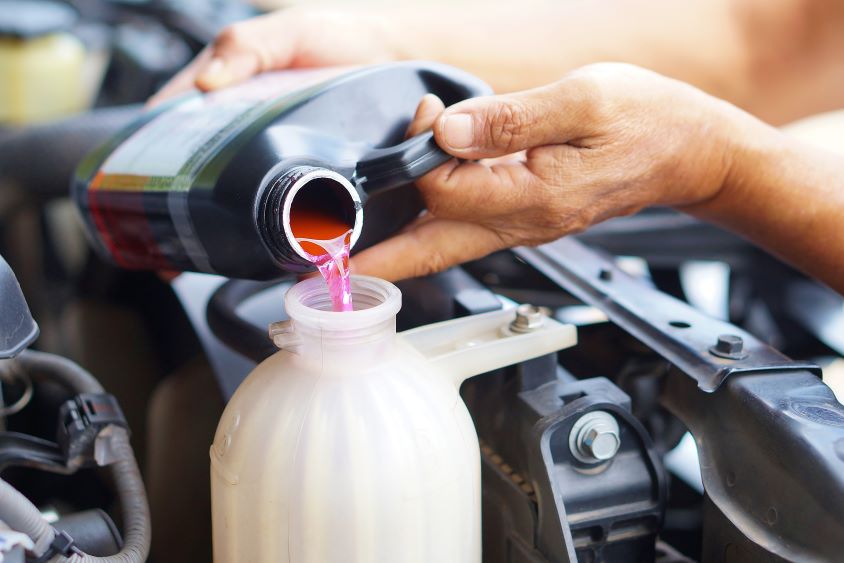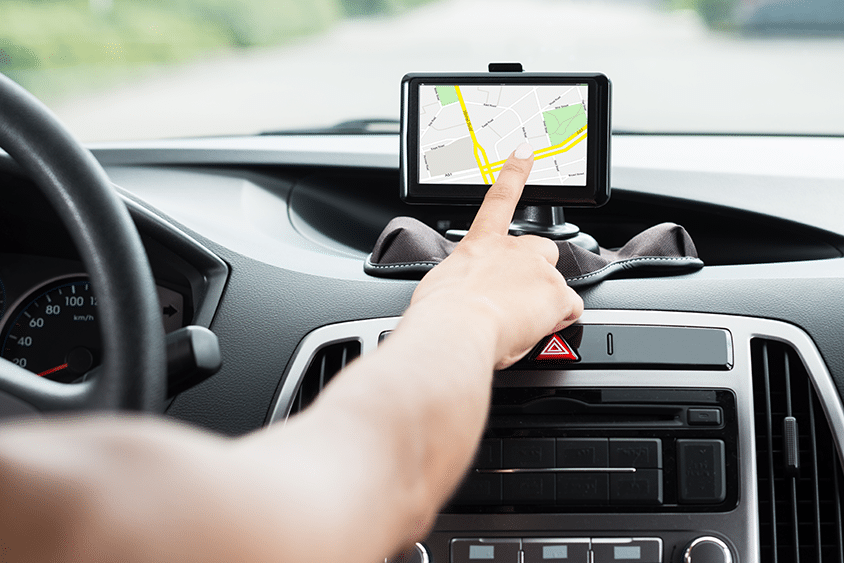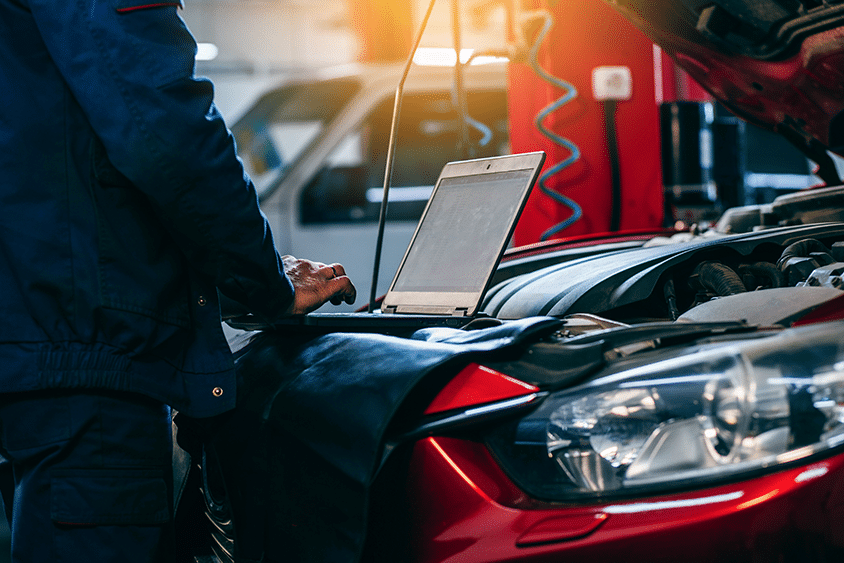How Do I Know If My Car Needs Coolant?
Written by: Marion Hanson, Last updated:4th March 2025

Keeping your engine cool is a critical factor in ensuring your vehicle runs efficiently and does not face the risk of overheating and causing potential damage to vital components that can be extremely costly to repair.
You will need to consider some other running costs. Find these out in our ‘Guide to running car costs’‘.
As a result, knowing when to add additional coolant to your engine is a must for all motorists. There are some tell-tale signs that your vehicle may be running low on coolant, so take the time to read our handy top tips below.
What is coolant in a car?
Coolant is a liquid substance used to keep the water in your engine at an optimal temperature. If the water gets too hot or reaches a freezing point, it could cause permanent damage to a car engine, so a coolant is designed to prevent this.
A cooling system circulates the coolant liquid through your car’s engine. It absorbs heat from the engine while constantly monitoring its temperature to keep it at safe levels.
Read our ultimate fleet guide to learn more about your fleet vehicles.
What is antifreeze?
You may also hear antifreeze mentioned in discussions of car coolants. Virtually all coolants commercially available today comprise antifreeze mixed with water at around a 50:50 ratio, which yields a coolant liquid capable of protecting your vehicle from excessive temperatures.
When should I top up my coolant?
So, how do you know whether you need to top up your coolant levels?
Most new cars have automatic systems to detect excessive heat caused by a lack of engine cooling. Still, drivers must monitor their engines closely for older models and ensure regular fleet maintenance to top up any engine fluids.
View our Ultimate Fleet Maintenance Guide for further information.
Coolant is available at local petrol stations, garages, and supermarkets. Use our pump locator to find your nearest fuel station.
A Red coolant light comes on when the car starts
A dashboard warning light will warn the driver that water/coolant levels are getting low. A rise in the temperature gauge is also a first sign that there might be a problem. Billowing steam, a hot bonnet, and a lack of control over the interior heating are also signs of temperature issues with the engine.
For newer vehicles
Most new vehicles have an automatic engine cut-off designed to prevent damage to key engine parts when temperatures spike. However, if your car is not fitted with this system, the driver is responsible for effectively topping up coolant levels.
When you fail to recognise the warning signs that your car has inadequate cooling, you risk damaging some of the most essential parts of your vehicle’s engine.
Symptoms of engine damage caused by heat
Poor cooling can result in severe damage to the water pump, head gasket, cylinder and piston timing, cylinder head, warped or bent connector rods, or even crank failure due to the high temperatures created by a car engine running.
Failure to properly maintain your vehicle can even result in the car becoming a write-off, so vigilance is key when topping up coolant.
You can find more information in our guide to vehicle checks and defect reporting.
What coolant for my car?
Choosing the correct coolant for your car ensures optimal engine performance and prevents overheating. Coolant, or antifreeze, helps maintain a safe operating temperature and prevents damage caused by extreme heat or cold.
Check Your Owner’s Manual
The best place to start is your vehicle’s owner’s manual. It will specify the type of coolant recommended for your car, including the mixture ratio (usually a 50/50 blend of coolant and water). Following these recommendations ensures compatibility with your car’s engine and cooling system.
Types of coolant for your car
- Inorganic Acid Technology (IAT): This coolant, typically green, is commonly used in older vehicles. It provides essential protection but needs to be replaced every 2-3 years.
- Organic Acid Technology (OAT): Often orange or pink, OAT coolants are used in newer cars and offer extended protection, lasting up to 5 years or 150,000 miles.
- Hybrid Organic Acid Technology (HOAT): A blend of IAT and OAT, HOAT coolants come in various colours, such as yellow, orange, or turquoise. They provide long-term protection and are commonly found in vehicles from European and American manufacturers.
What colour coolant for my car?
While the colour of the coolant doesn’t affect its performance, it helps identify the type of coolant in your system. Ensure you use the same kind, or consult your manual if unsure. Mixing different types can reduce the effectiveness of your vehicle’s cooling system.
Can I use any coolant in my car?
Always use coolant compatible with your vehicle’s materials, including gaskets and seals. Using the wrong type can cause corrosion or clogging in your engine.
How long does a coolant last in a car?
The lifespan of a car’s coolant typically ranges from 2 to 5 years, depending on the type and the manufacturer’s recommendations.
Inorganic Acid Technology (IAT) coolants generally need to be replaced every 2-3 years, while Organic Acid Technology (OAT) coolants can last up to 5 years or 150,000 miles. Hybrid Organic Acid Technology (HOAT) coolants also have a long lifespan, often requiring replacement every 5 years.
However, it’s essential to regularly check coolant levels and conditions, as factors like extreme driving conditions or system leaks may shorten its effectiveness. Always follow your vehicle’s owner’s manual for specific maintenance intervals.
How much coolant does my car take?
The amount of coolant your car requires can vary depending on its make and model, but most cars typically need between 1 and 2 gallons (3.8 to 7.6 litres).
To find the exact amount, check your vehicle’s owner’s manual, which will provide the specific capacity for your car’s cooling system.
Remember that the amount may also depend on whether you’re simply topping off the coolant or performing a full system flush and refill.
How to drain coolant from a car?
Draining the coolant from your car is straightforward but requires some caution. Here’s a general guide:
- Prepare the Car: First, park the car on a level surface and turn off the engine. Then, let the engine cool completely to avoid burns or injury.
- Locate the Radiator Drain Plug: Open the hood and locate the radiator drain plug, usually found at the bottom of the radiator. You may need to remove a splash shield to access it.
- Position a Drain Pan: Place a large container or drain pan beneath the radiator drain plug to catch the old coolant.
- Open the drain plug: Carefully loosen the drain plug using a wrench and allow the coolant to flow out. Be sure to dispose of the coolant properly, as it is toxic to animals and the environment.
- Flush the System: If you’re replacing the coolant, flush the cooling system with water to remove any remaining old coolant or debris. Follow your vehicle’s manual for flushing instructions.
- Close the Drain Plug: Once the coolant is fully drained, securely close the drain plug to prevent leaks.
- Refill with New Coolant: After draining and flushing, refill the radiator with the recommended coolant, checking your owner’s manual for the correct type and quantity.
How to handle and dispose of car coolant
Remember to handle coolant carefully and dispose of it according to local regulations. Consult a professional mechanic if you’re unsure or uncomfortable with the process.
Where does coolant go in a car?
The process of topping up your engine’s coolant is straightforward, and the steps are as follows:
- Ensure the engine is cold, the handbrake is applied, and the vehicle is in first gear.
- Raise the front of the vehicle on jacks and ensure the back wheels are chocked (locked in place and restricted) to prevent movement.
- Place a container below the engine’s radiator, undo the drain valve, and remove the filler cap.
- Flush the system as often as necessary to ensure it is empty.
- Locate and remove the reserve coolant tank from the vehicle. Drain any remaining fluid, then replace the tank securely and close the drain valve.
- Refill the system to the base of the filler neck with the correct coolant for your vehicle (specifications can often be found in your vehicle handbook).
- Finally, bleed the system of all air by briefly running the engine, turning it off, and topping it up once more. Repeat this process until the coolant level remains static when the engine is turned over. Securely replace the radiator cap to complete the process.
Discover how service plans can help save fleets money.
How can Fuel Card Services help?
All drivers must conduct regular maintenance checks on their vehicles to keep everything running smoothly, which could help avoid costly repairs in the future.
Given the sheer number of miles these vehicles cover, these issues must be resolved quickly for drivers using company cars and operators of commercial fleets.
Fuel Card Services offers MyService.Expert is a vehicle maintenance service that provides subscribers access to a network of garages across the UK, making fleet maintenance easy. The service grants access to pre-negotiated rates at thousands of UK garages, enabling businesses to make considerable savings on vehicle maintenance—with discounts of up to 25 per cent on all parts and labour.
back


